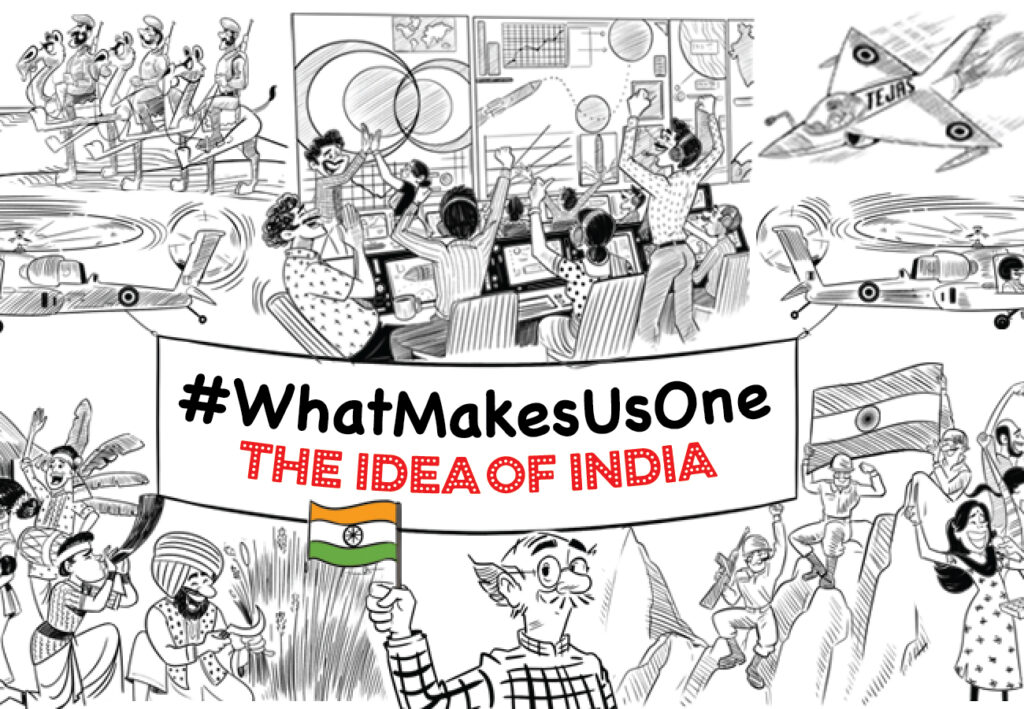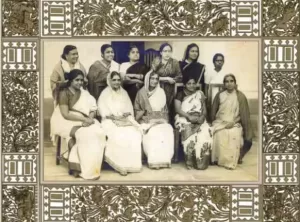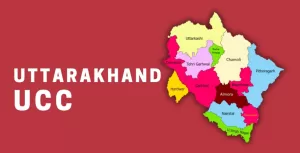In the original introduction to his popular book The Idea of India (1997), Sunil Khilnani writes:
“Nehru’s idea of India sought to coordinate within the form of a modern state a variety of values: democracy, religious tolerance, economic development and cultural pluralism. The unexpected historical trajectories of these various components since 1947 have changed the conditions of political competition in India… it has become much more difficult to sustain a vision of a single political community.”
Khilnani assumes, or claims, Nehru has an idea of India fitted into a range of values that can be named and laid out so there is nothing further to speculate on. By naming these four values meant for our polity and society, Khilnani also makes the idea of India pragmatic. There is nothing more to think about the ‘idea’ itself, now that we know what it is. The idea of India becomes definable and attainable.
Does the coming of a “single political community” establish a programmatic grid around the ‘idea’ of India? Does Nehru use the word ‘idea’ the way Khilnani lays it out? Khilnani makes an ontological and epistemological jump establishing the ‘idea’ of India in reverse by connecting it to other ideas. What makes India an ‘idea’ in the first place? Is there anything specific, or unique, to India?
Writing The Discovery of India from Ahmednagar jail between 1942 and 1945, Nehru writes in the epilogue:
“The discovery of India—what have I discovered? … About her there is the elusive quality of a legend of long ago; some enchantment seems to have held her mind. She is a myth and an idea, a dream and a vision, and yet very real and present and pervasive… Rabindranath Tagore, in line with that great succession, was full of the temper and urges of the modern age and yet was rooted in India’s past, and in his own self built up a synthesis of the old and the new.” [Emphasis mine]
Nehru’s use of the word ‘idea’ does not seem to resonate with the element of fixity and closure that Khilnani associates with it. In this passage, Nehru is contrasting the Indian mind against what Max Weber in his 1819 lecture called the “disenchantment of the world” that was produced from the “loss of a sense of shared meaning”.
The idea of India, in Nehru’s thinking, did not lose its ties with the idea of enchantment. The demystification and rationalisation of life and thinking that Protestantism introduced into the western world since the 16th century did not become so dominant it could prevent a rationalist like Nehru from imagining India as a myth, a dream and a vision.
To be sure, Nehru very much believes in the principles of democracy, religious tolerance, economic development and cultural pluralism. In fact, in a section in The Discovery titled ‘The Importance of the National Idea. Changes Necessary in India’, Nehru reiterates a “synthetic” approach to knowledge, a “turn to science”, the abandoning of caste, and political, social and economic equality.
But the ‘idea’ of India has an “elusive quality” to itself that does not fit – rather exceeds – the basket of attainable values.
In fact, Khilnani’s pragmatic endeavour begins with 1947 and fits Nehru’s ideas as part of the nationalist project. It bypasses one of Nehru’s most significant preoccupations in The Discovery: his grappling with Indian history.
Apart from disturbing the colonial periodisation of history as ancient and medieval, Nehru offers what Partha Chatterjee calls (in Nationalist Thought and the Colonial World: A Derivative Discourse, 1986) “a direct rebuttal” of the Orientalist dichotomy posed between East and West. The ‘idea’ of India, speculatively and politically, has to do with the contest over history, and ways to imagine that history.
Nehru in the mentioned passage from the epilogue imagines Tagore as a historical figure who upholds the paradox of the modern self that represents a certain idea of the past in the present. In a letter to C.F. Andrews from New York on March 13, 1921, Tagore evokes India as an ‘idea’:
“India has ever nourished faith in the truth of the Spiritual Man, for whose realisation she has made in the past innumerable experiments, sacrifices and penances, some verging on the grotesque and the abnormal. But the fact is she has never ceased in her attempt to find it, even though at the tremendous cost of losing material success. Therefore I feel that the true India is an idea, and not a mere geographical fact. I have come into touch with this idea in far-away places of Europe, and my loyalty was drawn to it in persons who belonged to countries different from mine.”
A few things converge in this passage. India is more, or less, than a “fact”. It is an idea. India, Tagore seems to think, is not its geography. He found the idea resonating in people who were not Indians. Clearly, Tagore’s idea of India is not an idea understood by Indians alone, or necessarily by them. It is a ubiquitous idea, one without an ethno-cultural centre.
This is way more inclusive than what Stuart Hall tells us of the West in his essay “The West and the Rest” (1992). The West is “an idea, a concept” but an idea within itself, differentiating it from the rest of the world in ethnocentric terms. The Rest is understood in relative terms as a lack, and that lack is fundamentally a lack of reason, beginning with a reason to exist on its own terms.
Remember what Perry Anderson says in his three-part essay “Indian Ideology” (2012): “The ‘idea of India’ was essentially a European, not a local invention. … Europeans could define Indians simply as ‘all natives of an unknown country’”.
Reason often makes fools of racist rationalists. Anderson’s European arrogance finds it necessary for his ancestors to have known the ‘idea of India’ if it existed, and since they didn’t find it, it didn’t exist.
Only in modernity it was necessary to discover and invent – historical discoveries are partly inventions – this ‘idea’. For it is the first time in history that the past becomes a political issue.
Modernity invents the past to separate itself and name itself in contradistinction to the past. The necessity to distinguish itself from the past comes from the announcement of reason as the superior tool of reflection, understanding and knowledge, spearheaded by the birth of science.
The past is unscientific, irrational, and the major blame for it is put on religion. Even though the past is unscientific, it is possible to study the past scientifically, rationally.
This pedagogic responsibility is also a mark of superiority. The past has to bend to the diktats of reason.
Perry Anderson finds no reason to believe it is possible to construct an ‘idea of India’ before the British arrived. Of course, the construction is modern. That doesn’t mean it is fiction. Anderson finds no connection of cultural memory between the Maurya, Gupta and Mughal empires.
A significant detail refutes Anderson’s claim: Romila Thapar points out that one of the seven Ashokan pillars that carry the inscription of the seven “major edicts of his policy” has an inscription by Samudragupta, the Gupta king, boasting of his military campaigns, and on the same pillar there is an inscription of Jahangir from the third millennium tracing his genealogy: “three inscriptions in three different languages, over three millenniums”.
It raises a poetic question: what led, or inspired, three kings at three vastly separated moments in historical time to inscribe their presence on the pillar? If we treat the pillar as an imaginary centre, then Ashoka, Samudragupta and Jahangir appear as figures on horseback whose concentric circles passed through that centre at a point in time. The Ashoka pillar stands as the symbol of a centrifugal force around which Indian history circulated.
If a history of our past can be woven around that centre, who is Anderson to object? In fact, the pillar is also a metaphor of the paradox of Indian history: it testifies continuity and rupture, culture and conquest.
For Anderson, “religious affiliation” and “uniformity” are missing between the Maurya, Gupta and Mughal regimes. If those are a European necessity to be called an ‘idea’, keep it for Europe. Indian history is a history of many religions and one of its key aspects is religious, ethnic and cultural variability.
When Anderson writes Europeans defined Indians as “natives of an unknown country”, questions arise that are not devoid of reason: Does Anderson mean Europeans discovered a country unknown to itself? Or does it mean a country not comprehensible to his English ancestors or Europeans in general? Is incomprehensibility, by rational standards, something devoid of meaning, or something that demands more attention?
This question leads me to Sanjay Seth’s essay, “Reason or Reasoning? Clio or Siva?” (2004), where he argues that instead of a singular idea of universal reason with a capital ‘R’, we need to pay attention to “traditions of reasoning”, particularly in how the Rest outside the West can also argue its history without having to cater to the conceptual demands of modern European traditions of thinking.
Reading Michel de Certeau, Sanjay Seth discovers the French scholar’s idea of history implies “the past of non-Western countries is not history’s past”. It does not occur to de Certeau that if the non-West can’t be fitted into a Western idea of history, the West and not the Rest needs to question and broaden its perception of history where the relationship between modernity and its past is not understood through binaries alone.
Nehru certainly sees the past more complicatedly. He writes in The Discovery: “National progress can, therefore, neither lie in a repetition of the past nor in its denial.” To deny the past is a psychological form of defence mechanism that does not want to confront the past. In order not to repeat the past, to overcome what is undesirable, one must acknowledge it as part of our unconscious.
In fact, in the letter to C.F Andrews quoted above, Tagore brings the past and the present in sharp contrast, colliding against each other, to sharply produce his idea of the political:
“India will be victorious when this idea wins the victory – the idea of ‘Purusham mahantam adityavarnam tamasah parastat” – “The Infinite Personality, whose Light reveals itself through the obstruction of Darkness.” Our fight is against this Darkness, Our object is the revealment of the Light of this Infinite Personality of Man… The darkness of egoism which will have to be destroyed is the egoism of the Nation. The idea of India is against the intense consciousness of the separateness of one’s own people from others, which inevitably leads to ceaseless conflicts.” [Emphasis mine]
Tagore’s translation of ‘Purusham’ rids the gendered nature of the word. The idea of India is imagined at the level of the individual as a flowering of personality that allows all forms of light to fall on itself. Darkness is imagined as a property of the mind that prevents light. Tagore concretises it by associating it with egoism, a psychological term that explains, among other things, human acts motivated by self-interest.
But the matter takes a radical turn when Tagore further identifies the psychological property of the mind’s darkness in “the egoism of the nation” which is, simply, nationalism. Tagore believes nationalism is dangerous because it divides “one’s own people” from others. But it isn’t just that.
Nationalism can create doubts, suspicions and claims against the idea of who “one’s own people” are. In other words, nationalism can turn one’s own people into other people. Tagore makes the radical political point that the ‘idea’ of India is not served by nationalism. He said it, mind you, in 1921, in the thick of the anticolonial struggle.
This was a radical departure from all European thinkers writing on the nation during that time. It is also a departure from Tagore’s own reading of Ernest Renan’s 1882 essay, ‘What is a Nation?’ that he discusses in a Bengal essay in 1901-1902 (mentioned by Partha Chatterjee, Lineages of Political Society, 2011).
For Tagore, nationalism is lucifugous: what shuns light, or is anti-light. It is not the black hole, but the hypothetical white hole of space that can imaginarily envelop the mind, and prevent light from entering.
Take the nationalist phrase, ‘unity in diversity’. Whether you privilege ‘unity’ or ‘diversity’ in the phrase, the mind obsessed with establishing unity without allowing diversity, or difference, to sink in is bound to use the force of egoism, or the egoism of force, to create a darkness of unity. Difference alone throws light on unity.
Despite the limitations in Khilnani’s evocation of the ‘idea’ of India, he however extends the point into the political realm when he writes:
“And yet the idea of India retains a remarkable tenacity… The old arguments and battles are replayed today with the current generation’s new meanings and desires: Ambedkar is once again ranged against Gandhi, Patel is brought into battle against Nehru. Even as they divide, these struggles themselves testify to the presence of a common history, a shared Indian past. The struggle for that past is of course a struggle to determine the future ideas of India… These struggles constitute the identity of India’s history since 1947. And, in its ability constantly to encompass diverse ideas of what India is, this history is itself expressive of the Indian idea.” [Emphasis mine]
What is the political in the ‘idea’ of India? To draw from the above statement, it is a battleground of ideas. No idea is safe from the battles of history. Hence, it is always prone to contestation.
As Romila Thapar puts it in her conversation with Gayatri Chakravorty Spivak (The Idea of India: A Dialogue, 2023), “One of the problems… in the notion of the idea of India, or the idea of any place for that matter, is of course that the idea changes – it’s not the same all the time.”
To keep any ‘idea’ alive however, to be able to think it without doing violence to its imaginative possibilities, ideological fixities need to be avoided. The political does not necessarily have to be ideological.
For instance, refutations by European thinkers and scholars of the cultural continuities in Indian history and the persistence of the ‘idea of India’ have been ideologically framed. Some of the challenges against those refutations have been political. Ideology seeks closure. The political, in the purest sense of radical, will pursue the question, allow thinking.
The idea of India, for that matter, will always exceed all that is said about it, or against it.
(Manash Firaq Bhattacharjee is the author of ‘Nehru and the Spirit of India’. Courtesy: The Wire, an Indian nonprofit news and opinion website. It was founded in 2015 by Siddharth Varadarajan, Sidharth Bhatia, and M. K. Venu.)




